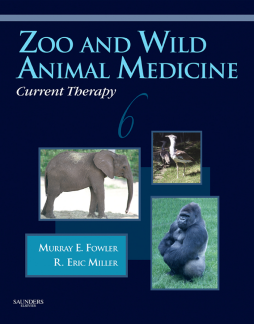
Additional Information
Book Details
Abstract
With expert contributors from around the world sharing their knowledge on 57 new cutting-edge areas of interest, Zoo and Wild Animal Medicine, Volume 6 continues to provide outstanding coverage of today’s most relevant topics. This book is an essential resource in zoo and wild animal medicine, addressing the special challenges posed by individual and herd medical management, newly emerging diseases in diverse wild animal populations, the effect of habitat loss and destruction on wildlife species, and the utilization of zoo animals in the surveillance and detection of potential zoonoses. The user-friendly current therapy approach continues to serve a vital function in the field by fostering a conservation biology ethic, bridging the gap between captive and free-ranging wild animal medicine, from a diverse group of experts.
- Includes practical guidance on such topics as behavioral training for medical procedures and the use of infrared thermography.
- Divided into four sections -- Conditions Affecting Multiple Species, Poikilotherms, Avian Medicine, and Mammals -- to help you find the information you need quickly.
- Extensive contributor list includes multinational contributors offering expert information on species from around the world.
- Presents timely topics in zoo and wild animal medicine with 57 new chapters to provide the best and most current information available.
- The most up-to-date information on hot topics such as avian influenza, West Nile virus, and other pathogens threatening wildlife and human populations on a global scale.
- Cutting-edge insights on environmental and public health concerns, such as occupational exposure to zoonotic simian retroviruses and use of wildlife rehabilitation centers as monitors for ecosystem health.
- A color plate section presents vivid depictions of external clinical signs for more accurate clinical recognition.
